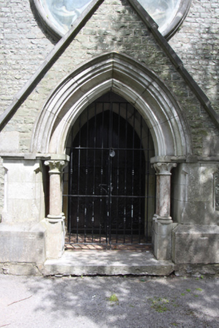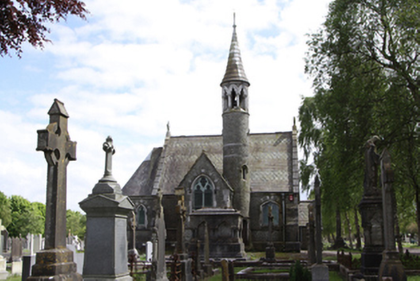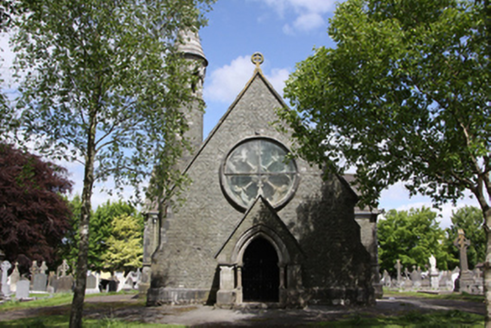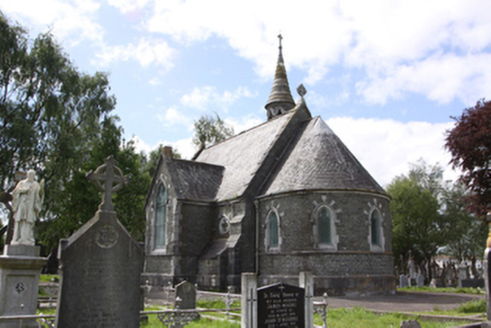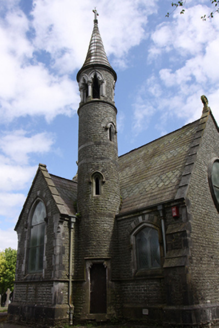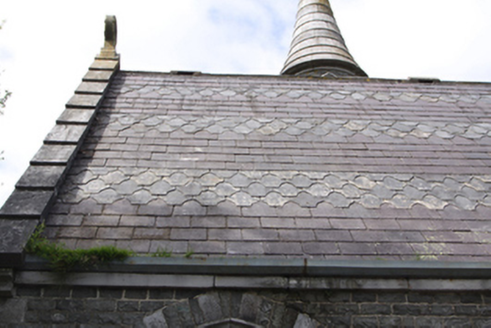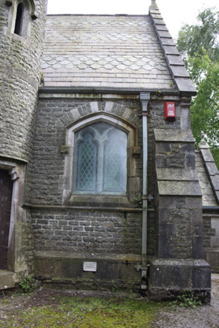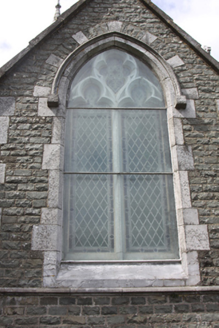Survey Data
Reg No
20870005
Rating
Regional
Categories of Special Interest
Architectural, Artistic, Historical, Social
Original Use
Church/chapel
In Use As
Church/chapel
Date
1865 - 1870
Coordinates
165608, 70237
Date Recorded
11/05/2011
Date Updated
--/--/--
Description
Freestanding cruciform Roman Catholic mortuary chapel, consecrated 1867, having apsidal east end with a round tower adjoining the north transept and gable-fronted entrance porch to west. Pitched slate roof having bands of scalloped slate, limestone coping and cross finials to gable ends and limestone eaves cornice. Conical slated roof to round-tower with limestone cross finial to apex. Cast-iron rainwater goods having decorative motifs to hoppers. Squared coursed basalt walls with cut limestone quoins, plinth and string course. Four-centred-arched openings with limestone hood mouldings having label stops, limestone surrounds, limestone tracery and stained glass. Rose window with carved limestone tracery and moulded limestone surround to west elevation. Lancet windows to the lower levels of the round tower with carved limestone arcade of openings having paired columns to top stage. Single-storey gable-fronted porch having slate roof, limestone finial, limestone coping stones and ashlar limestone to lower walls with basalt above. Carved limestone archivolts supported on paired marble columns having foliate limestone capitals, limestone threshold, ceramic tiled floor and braced sheeted timber door. Shouldered-arch opening to round tower having a raised limestone threshold and with a sheeted timber door. Situated within St Finbarr's Cemetery.
Appraisal
This chapel, designed by Sir John Benson, has a Hiberno-Romanesque influence, most evident in the round tower to the north elevation. The use of basalt stone for a building is very unusual in this part of the country and the polychromatic use of the paler limestone with the basalt results in a distinctive character and appearance. The scalloped slate to the roof and decorative cast-iron rainwater goods are examples of the type of architectural ornamentation favoured during this period. Although very similar to the Protestant chapel in the cemetery, this building displays subtle differences such as the location of the entrance porch and round tower.
